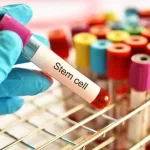Boy, 13, becomes first person ever to be cured of terminal brain cancer
The post Boy, 13, becomes first person ever to be cured of terminal brain cancer appeared first on Healthy Holistic Living.
Lucas Jemeljanova‘s story is a beacon of hope in the world of medical advancements. At the tender age of six, Lucas was diagnosed with Diffuse Intrinsic Pontine Glioma (DIPG), a rare and aggressive brain cancer that presents an almost insurmountable challenge to those it afflicts. DIPG is known for its grim prognosis, with statistics indicating that 98 percent of patients succumb to the disease within five years of diagnosis. Children diagnosed with DIPG are typically given a life expectancy of just nine to twelve months, painting a bleak future for them and their families.
Yet, Lucas’s journey is one marked by defiance of expectations and the incredible potential of medical innovation. This young boy’s story is not just a personal victory but a landmark in the ongoing battle against one of the most unforgiving cancers affecting children. As we delve into the details of his diagnosis, treatment, and unprecedented recovery, we invite our readers to join us in exploring a tale that intertwines despair with hope, science with miracles, and the indomitable spirit of a child with the dedication of the medical community. Lucas’s story is a testament to the leaps of progress being made in the field of oncology, offering a glimmer of light for countless families navigating the darkest of times.
Lucas’s Journey
Lucas Jemeljanova’s life took an unexpected turn when, at just six years old, he was diagnosed with Diffuse Intrinsic Pontine Glioma (DIPG), a diagnosis that traditionally comes with a heartbreakingly short prognosis. For most families, this news would mark the beginning of an unimaginably difficult journey, filled with more questions than answers. DIPG is not just any cancer; it’s a particularly aggressive form of brain tumor that infiltrates the pons region of the brainstem, rendering surgical options virtually impossible and leaving few viable treatments available.
Despite the grim outlook, Lucas and his family refused to succumb to despair. The usual treatment path for DIPG involves radiotherapy, which can only extend life temporarily without offering a cure. Unwilling to accept this as their only option, Lucas’s parents embarked on a relentless search for alternative treatments, a quest that led them from their home in Belgium to France. It was there that Lucas was enrolled in a groundbreaking study known as Biological Medicine for DIPG Eradication (BIOMEDE).
The BIOMEDE study, initiated in 2014, was at the forefront of exploring new avenues for treating DIPG. Its approach was innovative, focusing not on a one-size-fits-all treatment but on tailoring therapies to the individual patient’s biological makeup. For Lucas, this meant a journey filled with hope but also uncertainty, as he became part of a pioneering effort to challenge the status quo of DIPG treatment.
Lucas’s participation in the BIOMEDE study marked a pivotal chapter in his journey, one that would not only challenge his strength and resilience but also pave the way for an extraordinary development in the fight against DIPG. As we explore the specifics of the BIOMEDE study and the novel treatment that Lucas received, his story unfolds as a testament to the power of innovation, determination, and the unwavering human spirit in the face of adversity.
The BIOMEDE Study
At the heart of Lucas Jemeljanova’s remarkable recovery was his involvement in the Biological Medicine for DIPG Eradication (BIOMEDE) study, a pioneering clinical trial that sought to challenge the grim realities of Diffuse Intrinsic Pontine Glioma (DIPG) treatment. Unlike traditional approaches that often rely on radiotherapy—a palliative treatment offering only temporary relief—the BIOMEDE study embarked on a mission to explore the potential of targeted cancer drugs in fighting this aggressive form of brain cancer.
The innovative approach of the BIOMEDE study lay in its personalized treatment strategy. Researchers meticulously analyzed a small fragment of the tumor from each participant, extracted with precision using a needle. This crucial step was more than just a procedural necessity; it was a gateway to understanding the unique biological landscape of each patient’s cancer. By decoding the specific characteristics of the tumor, the study aimed to match each patient with the drug most likely to be effective against their particular form of DIPG.
For Lucas, this meant receiving a treatment regimen that was tailored specifically to him, based on the insights gleaned from the analysis of his tumor. The study tested the effectiveness of three cancer drugs: erlotinib, everolimus, and dasatinib. Each of these drugs targets cancer cells in different ways, but all with the aim of halting their growth and spread. Erlotinib and dasatinib are known for their ability to inhibit certain proteins involved in the signaling pathways that cancer cells use to proliferate, while everolimus specifically blocks the mTOR protein, crucial for the division and growth of cancer cells.
The decision to assign everolimus to Lucas was grounded in a careful consideration of his tumor’s biological makeup. This choice was not just a shot in the dark but a calculated move based on the most advanced scientific understanding available. As Lucas embarked on this treatment, the hope was not only for a halt in the progression of his DIPG but for a significant reduction in the size of his tumor.
The BIOMEDE study represents a shift towards more personalized and targeted approaches to cancer treatment, reflecting a broader trend in oncology. By focusing on the individual characteristics of each patient’s cancer, researchers aspire to increase the efficacy of treatments and reduce the side effects associated with more generalized therapies. Lucas’s participation in this study not only offered him a new lease on life but also contributed valuable data that could help refine future treatments for DIPG, potentially saving many more lives in the process.
The Role of Everolimus
In the landscape of medical treatment for Diffuse Intrinsic Pontine Glioma (DIPG), the introduction of everolimus through the BIOMEDE study marked a significant paradigm shift. Everolimus, a drug previously untested for DIPG, operates on a novel therapeutic principle compared to conventional treatments. It targets a specific protein known as mTOR, which plays a pivotal role in the growth and division of cancer cells. By inhibiting this protein, everolimus aims to halt the progression of the disease, a strategy that offered a glimmer of hope where little had existed before.
The choice of everolimus for Lucas was informed by the meticulous analysis conducted as part of the BIOMEDE study. This decision was not random but based on a hypothesis that Lucas’s unique tumor biology would respond positively to the drug. It’s crucial to understand that mTOR inhibition represents a targeted approach, aiming to disrupt a critical pathway that cancer cells exploit for their unchecked proliferation. This mechanism of action is distinct from the broader impact of radiotherapy, which damages both healthy and cancerous cells, and offered a more precise, potentially less harmful way to tackle DIPG.
Everolimus’s introduction into the treatment regimen for DIPG was a leap into the unknown, driven by the hypothesis that targeting specific molecular pathways could offer a more effective strategy against this aggressive cancer. This approach is at the heart of personalized medicine, which seeks to tailor treatments to the individual characteristics of each patient’s disease. The rationale behind using everolimus was grounded in the broader scientific understanding of cancer biology, yet its application to DIPG was pioneering.
The significance of everolimus’s role in Lucas’s treatment cannot be overstated. For the first time in the fight against DIPG, a therapy was being employed that directly targeted the molecular underpinnings of the tumor’s growth. This strategy represented a bold departure from traditional treatments, offering a beacon of hope not just for Lucas but for the entire DIPG community. As Lucas embarked on this novel treatment path, the medical and patient communities watched with bated breath, eager to see the outcome of this innovative approach to a long-standing medical challenge.
Lucas’s Unprecedented Recovery
Lucas Jemeljanova’s response to the everolimus treatment under the BIOMEDE study unfolded as a narrative of unprecedented success within the medical community’s ongoing battle against Diffuse Intrinsic Pontine Glioma (DIPG). What set Lucas apart was not just his participation in an innovative study but the remarkable outcome that followed. Over the course of the treatment, Lucas’s medical team, led by Doctor Jacques Grill, witnessed the kind of result that, until then, was unheard of in the history of DIPG treatment: Lucas’s tumor completely disappeared.
This extraordinary development was not just a personal victory for Lucas and his family but a moment of astonishment and hope for the entire medical community treating DIPG. Dr. Grill, who had seen countless cases of DIPG throughout his career, was astounded by Lucas’s recovery. The series of MRI scans over time provided incontrovertible evidence that Lucas’s tumor had vanished entirely, a phenomenon Dr. Grill had never before encountered with this type of cancer. “I don’t know of any other case like him in the world,” Dr. Grill told AFP, encapsulating the singularity of Lucas’s recovery.
While Lucas was the only participant in the BIOMEDE study to achieve complete tumor eradication, the trial also saw significant positive outcomes for other children. Seven other participants experienced substantial tumor shrinkage and an increase in life expectancy, highlighting the potential of targeted treatments like everolimus in managing, if not curing, DIPG. However, Lucas’s case remains unique, standing as the sole instance of complete tumor disappearance within the study.
The impact of Lucas’s recovery extends far beyond his individual case. It serves as a potent symbol of hope and a testament to the potential of personalized medicine in treating cancers that have long been deemed incurable. The use of everolimus, a drug never before used in the context of DIPG, and its remarkable success in Lucas’s case, opens new avenues for research and treatment strategies. Lucas’s story is not just about overcoming the odds; it’s about redefining the boundaries of what’s possible in the treatment of DIPG and potentially other aggressive cancers.
Understanding the Success
Lucas Jemeljanova’s recovery from Diffuse Intrinsic Pontine Glioma (DIPG) following treatment with everolimus in the BIOMEDE study is not only a beacon of hope but also a subject of intense scientific interest. The extraordinary outcome of his case prompts a deeper inquiry into why Lucas’s tumor responded so favorably when others have not. This section delves into the potential factors contributing to his unprecedented recovery and the implications it holds for future treatment strategies.
The role of Lucas’s unique biological makeup in his recovery cannot be overstated. Researchers and doctors believe that the specific characteristics of his tumor, perhaps at a genetic or molecular level, made it particularly susceptible to the effects of everolimus. This highlights the importance of personalized medicine—a treatment approach tailored to the individual characteristics of each patient’s disease. In Lucas’s case, the decision to use everolimus was informed by a detailed analysis of his tumor’s profile, demonstrating how personalized approaches can lead to breakthroughs in treatment outcomes.
Following Lucas’s recovery, the research team embarked on a mission to understand the underlying mechanisms that contributed to the success of his treatment. Marie-Anne Debily, a researcher involved in the study, expressed optimism about the potential to replicate Lucas’s treatment success. “Lucas’ case offers real hope. We will try to reproduce in vitro the differences that we have identified in his cells,” she told AFP. This statement underscores the commitment to unlocking the secrets of Lucas’s recovery, with the aim of extending similar outcomes to other DIPG patients.
The scientific community is keen on dissecting every aspect of Lucas’s treatment and biological response to everolimus. The goal is to identify biomarkers or specific genetic mutations that may have contributed to the effectiveness of the treatment. Understanding these factors could lead to the development of targeted therapies that can benefit a broader population of DIPG patients.
Moreover, Lucas’s case has sparked a renewed interest in exploring the role of mTOR inhibitors like everolimus in cancer treatment. It opens the door to further research on how these drugs can be optimized for use in DIPG and potentially other aggressive cancers. The success of Lucas’s treatment serves as a catalyst for future studies, encouraging researchers to explore unconventional treatment strategies and combinations that could offer new hope to patients facing similar diagnoses.
Lucas’s recovery is more than a miraculous outcome; it is a case study that underscores the potential of personalized medicine and targeted therapy in treating complex diseases like DIPG. By continuing to investigate the specific factors that led to his unprecedented response to everolimus, researchers are paving the way for new therapeutic strategies that could transform the prognosis for DIPG and other challenging cancers.
Lighting the Path to Recovery
Lucas Jemeljanova’s recovery from Diffuse Intrinsic Pontine Glioma (DIPG) stands as a monumental beacon of hope, not just for those directly affected by this aggressive cancer but for the broader field of oncology. His story underscores the potential of innovative, personalized medicine approaches and the critical importance of ongoing research and development in the fight against cancer. Here, we delve into the broader implications of Lucas’s recovery and what it means for the future of DIPG treatment and beyond.
Lucas’s case has shown that targeted therapies, like everolimus, which are chosen based on the individual’s unique tumor biology, can have profound effects, even in cancers previously considered untreatable. This success story propels the medical community to further explore and invest in personalized medicine.
The role of everolimus in blocking the mTOR protein, pivotal in cancer cell growth, illustrates the potential of targeting specific pathways in cancer treatment. It’s a strategy that could be applied to other aggressive cancers, offering new avenues for research and therapy development.
Personalized or precision medicine emerges as a cornerstone of future oncological approaches, with Lucas’s recovery highlighting its potential benefits. Tailoring treatment to the specific genetic makeup of a patient’s tumor can lead to better outcomes and fewer side effects compared to traditional treatments.
Lucas’s story emphasizes the need for comprehensive genetic and molecular profiling of tumors in all cancer patients. Such profiling can identify actionable targets for therapy, transforming the prognosis for diseases with historically poor outcomes.
Researchers are now more than ever motivated to replicate the success seen in Lucas’s case. This involves not only understanding the biological reasons behind his recovery but also applying this knowledge to develop treatments for other patients with DIPG.
Lucas’s case has opened the door to exploring the use of everolimus and similar drugs in other cancers, particularly those where the mTOR pathway is involved. It also underscores the importance of clinical trials in uncovering new treatments and improving outcomes for cancer patients.
Lucas’s unprecedented recovery is a testament to the resilience of the human spirit and the boundless possibilities within medical science. It serves as a powerful reminder of the importance of hope, the potential of innovative treatments, and the critical need for continued research and funding in the fight against cancer. As we move forward, Lucas’s story will undoubtedly inspire both the medical community and families affected by DIPG, lighting the way toward a future where this devastating disease can be effectively treated or, even better, cured.
Lucas’s Story as a Beacon of Hope in the Fight Against Cancer
The story of Lucas Jemeljanova, a young boy who achieved an unprecedented recovery from Diffuse Intrinsic Pontine Glioma (DIPG), is more than a medical anomaly; it’s a narrative that redefines the boundaries of hope and the power of innovation in the realm of cancer treatment. Lucas’s journey from a grim diagnosis to a beacon of possibility illuminates the path forward for countless families and researchers grappling with DIPG and similar aggressive cancers.
Lucas’s recovery, facilitated by the groundbreaking approach of the BIOMEDE study and the targeted application of everolimus, underscores a pivotal shift towards personalized medicine in oncology. It exemplifies how understanding the unique molecular landscape of each patient’s tumor can lead to treatments that are not only more effective but also potentially less harmful. This paradigm shift, heralded by Lucas’s case, emphasizes the importance of continued investment in research and the development of innovative treatments that can address the specific needs of individual patients.
Moreover, Lucas’s story is a testament to the resilience of the human spirit and the relentless pursuit of answers by patients, families, and medical professionals. It serves as a powerful reminder that even in the face of seemingly insurmountable odds, progress is possible, and breakthroughs can and do happen. Lucas’s case offers real hope—not just a fleeting sentiment, but a tangible proof that the fight against cancer is advancing, with each discovery building on the last toward a future where more lives can be saved.
As we reflect on the significance of Lucas’s recovery, we are reminded of the importance of hope, innovation, and the unwavering commitment to pushing the boundaries of medical science. His story is a rallying cry for continued research, funding, and advocacy in the fight against DIPG and other challenging diseases. It encourages us to envision a world where the term “incurable” becomes less and less applicable, replaced by a landscape of endless possibilities and cures within reach.
Lucas’s remarkable journey from diagnosis to recovery is not just a singular medical success story; it’s a beacon of hope that lights the way for the ongoing battle against DIPG and a reminder of the incredible advancements that are possible when we dare to innovate and persevere. Let Lucas’s story inspire us all to continue the fight, support cancer research, and never lose sight of the hope that tomorrow’s treatments may bring even more stories of miraculous recovery.
The post Boy, 13, becomes first person ever to be cured of terminal brain cancer appeared first on Healthy Holistic Living.











